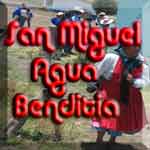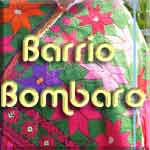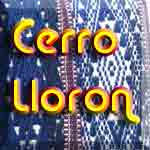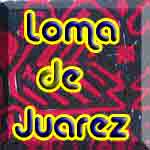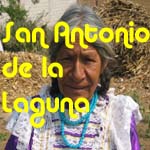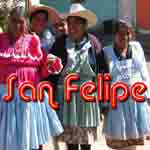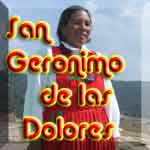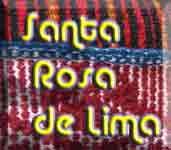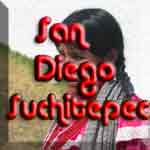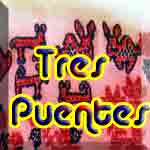 |
 |
 |
 |
|
Agua Bendita
|
Barrio Bombaro
|
|
Cerro Lloron
|
Loma de Juarez
|
|
San Antonio la Laguna
|
San Felipe Santiago
|
|
San Geronimo Dolores
|
Santa rosa de Lima
|
|
San Simon
|
Suchitepec
|
|
Tres Puentes
|
|
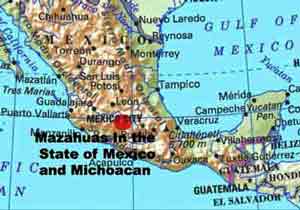 |
|
The basic economic activity is agriculture with corn, beans, squash, maguey and fruit being the principal crops. The Mazahua also keep the common barn yard animals such as goats, sheep, chickens, turkeys, horses and oxen. Immigration, as with many indigenous groups, is an important source of income for the family. The Mazahua also produce handicrafts, embroidered goods and woven baskets are among the most well known.
The costume varies in its detail but stick to a style that is easily distinguished, click here for a PDF file with a composite of all the villages on this page.
Even with the help of the Delgados this was not an easy group to research, however with patience and perseverance this small sample of the Mazahua is here for your enjoyment. The Mazahua are a large group and if coupled with the Otomi of the state of Mexico probably number over 300000 people. They are in various stages of transition, with some villages losing costume and language at a incredible pace. Since the people must go to Toluca or Mexico City to find work they are exposed to the influences of the modern world. Many Mazahua women go to work as domestics and the men as laborers, they earn bottom dollar but it is still more than they can make in the towns.
An interesting antidote about the way I was greeted, when ever I asked a question the person (universally) would ask “ who is asking”. At first this set me aback but after the first 10 people all said the same thing I figured out that I should introduce myself before asking a question.
The following are monographs of the districts I visited in Spanish. They represent many of the districts that the Mazahua live in. They were written bu Mexicans so they generally minimize the Mazahua presence.
Lo siguiente son los distrito donde viven las Mazahuas que yo visitaba. Como son escritos por Mexicano (mestizos) minimizan las Mazahua pero son un buen referencia sobre la territorio de las Mazahua
Distrito de Villa Victoria.pdf
Distrito de San Felipe Progreso.pdf
Distrito de Donato de Guerra.pdf
|
Home - The Collection - Indigenous women- Bob's Top 10 - Textile Patterns - Documented Villages - Participate The Store Other traditions Video Page Email me at: mexican@mexicantextiles.com
© 2006 Bob Freund All Rights Reserved |
